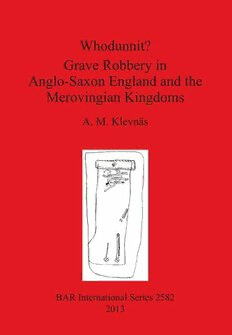
Whodunnit? Grave Robbery in Anglo-Saxon England and the Merovingian Kingdoms PDF
309 Pages·2013·32.608 MB·English
Most books are stored in the elastic cloud where traffic is expensive. For this reason, we have a limit on daily download.
Preview Whodunnit? Grave Robbery in Anglo-Saxon England and the Merovingian Kingdoms
Description:
This work brings together all that is currently known of early medieval grave disturbance in Anglo-Saxon England and on the Merovingian continent. It investigates in detail an intensive outbreak of grave disturbance in 6th-7th century Kent. This is closely related to the same phenomenon in Merovingia: an example of the import of not only material goods but also a distinctive cultural practice. Limited numbers of similar reopening episodes, affecting a much smaller proportion of graves in each cemetery, are also identified elsewhere in Anglo-Saxon England. Although the phenomenon of grave robbery is well-attested in Merovingia, this research is the first study at a regional level. The aim is to advance the debate about early medieval disturbance from general discussion of interpretative possibilities to evaluation of specific models and their compatibility with the archaeological evidence.
See more
The list of books you might like
Most books are stored in the elastic cloud where traffic is expensive. For this reason, we have a limit on daily download.
